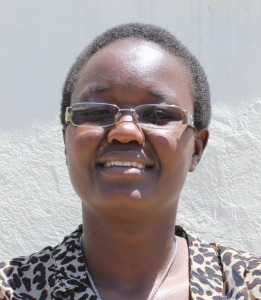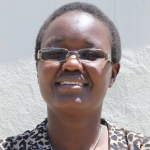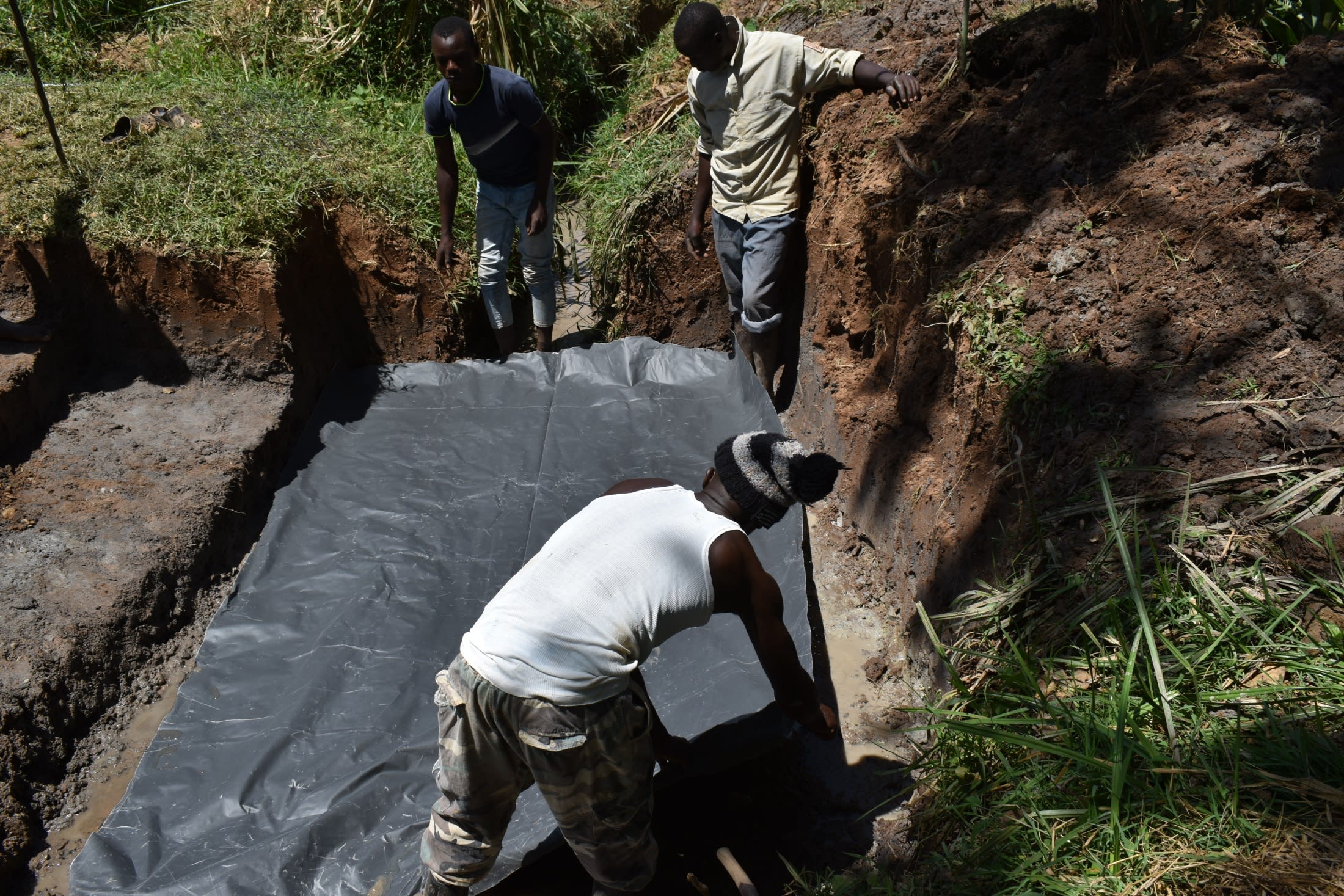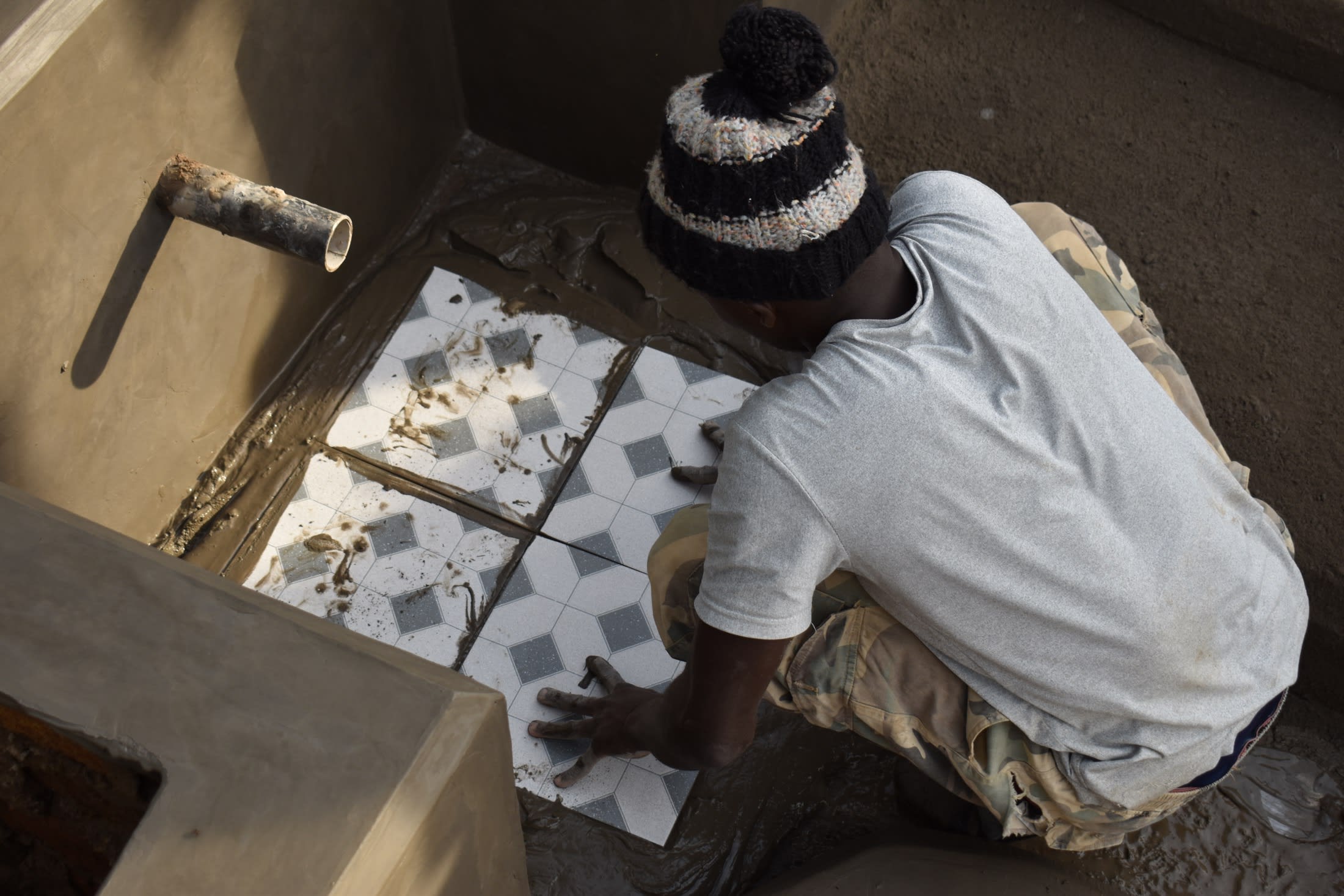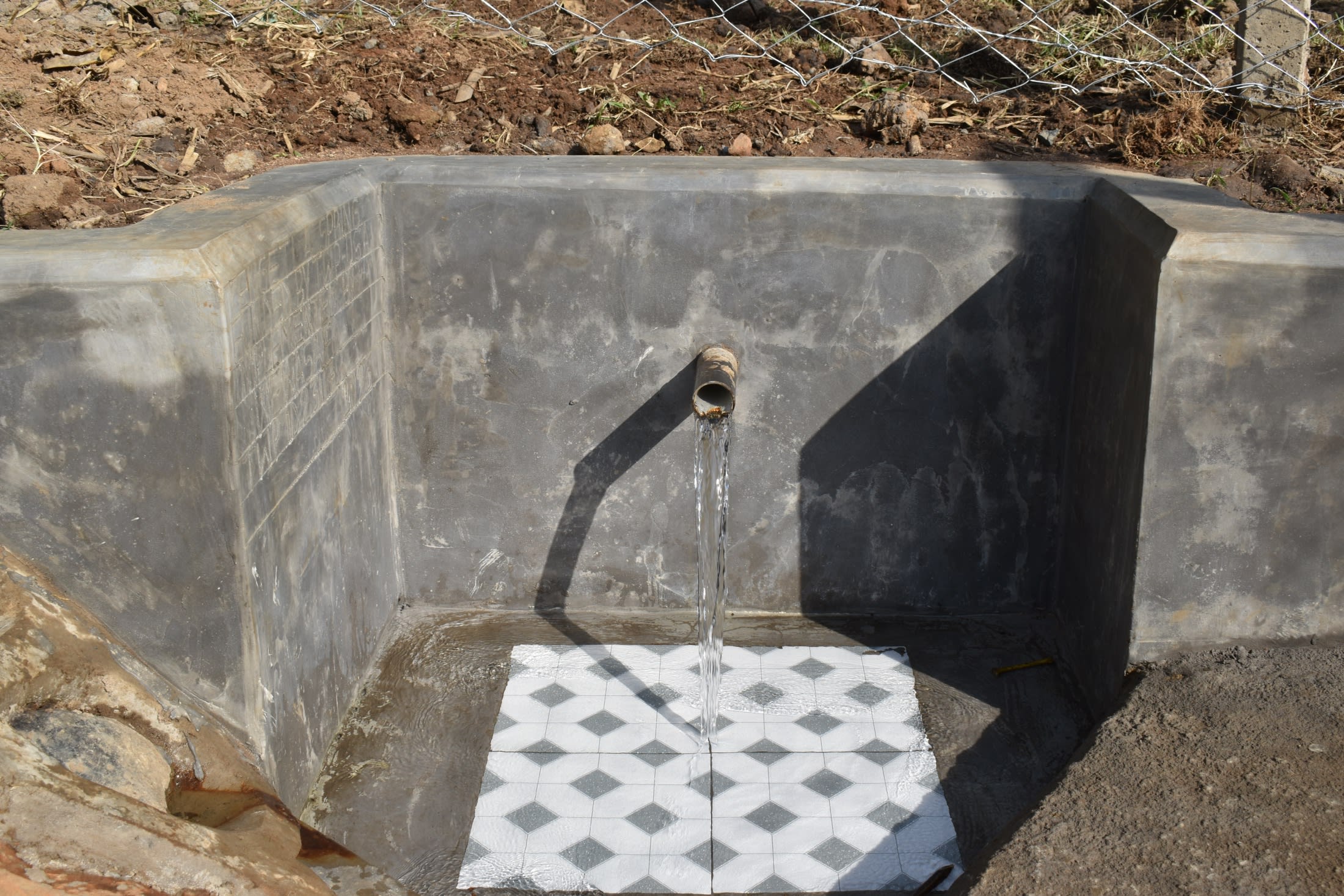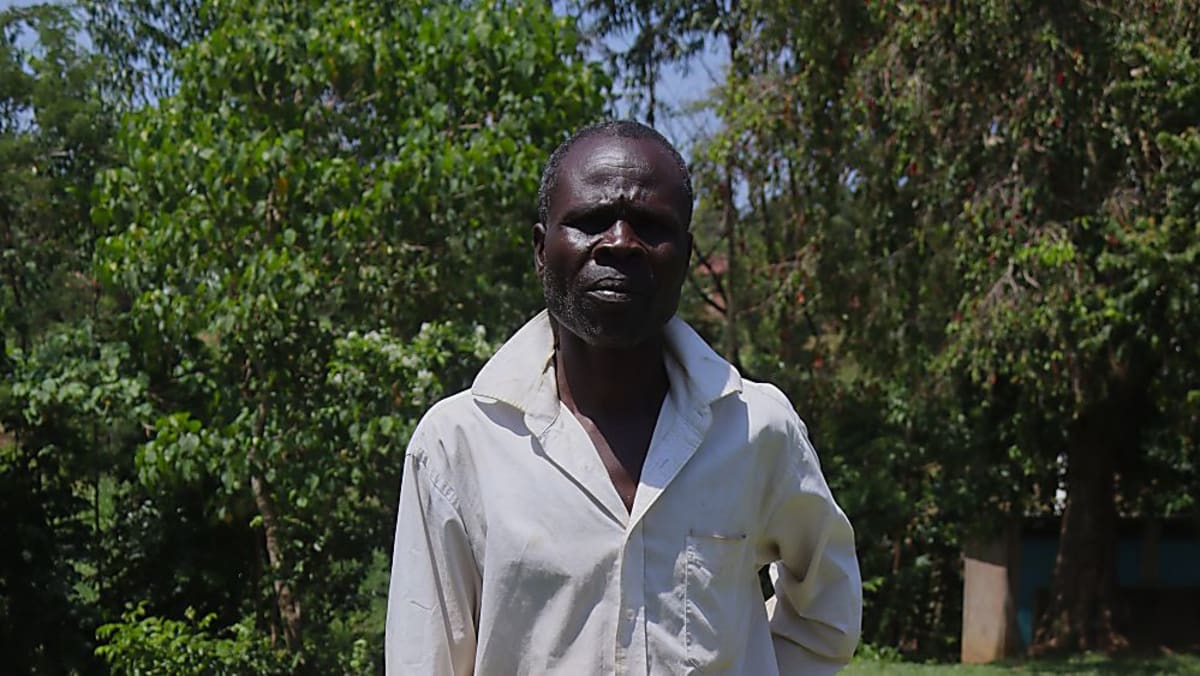The 200 community members living in the community of Tengeti face each day knowing the water they collect and consume from their local spring, although plentiful, is making them sick, but they have no other alternative.
"Our only source of water has brought sorrow instead of joy because I have been visiting the hospital on a monthly basis. This is because my two sons were very sick and they were admitted at the hospital two weeks ago. They were put on medication for five days because they had typhoid and amebiasis (an intestinal illness caused by microscopic parasites)," said 53-year-old farmer Nancy Wafula, shown below carrying water away from the spring. "I thank God they are fine now, but [I] am worried we are still drinking water from the same spring."
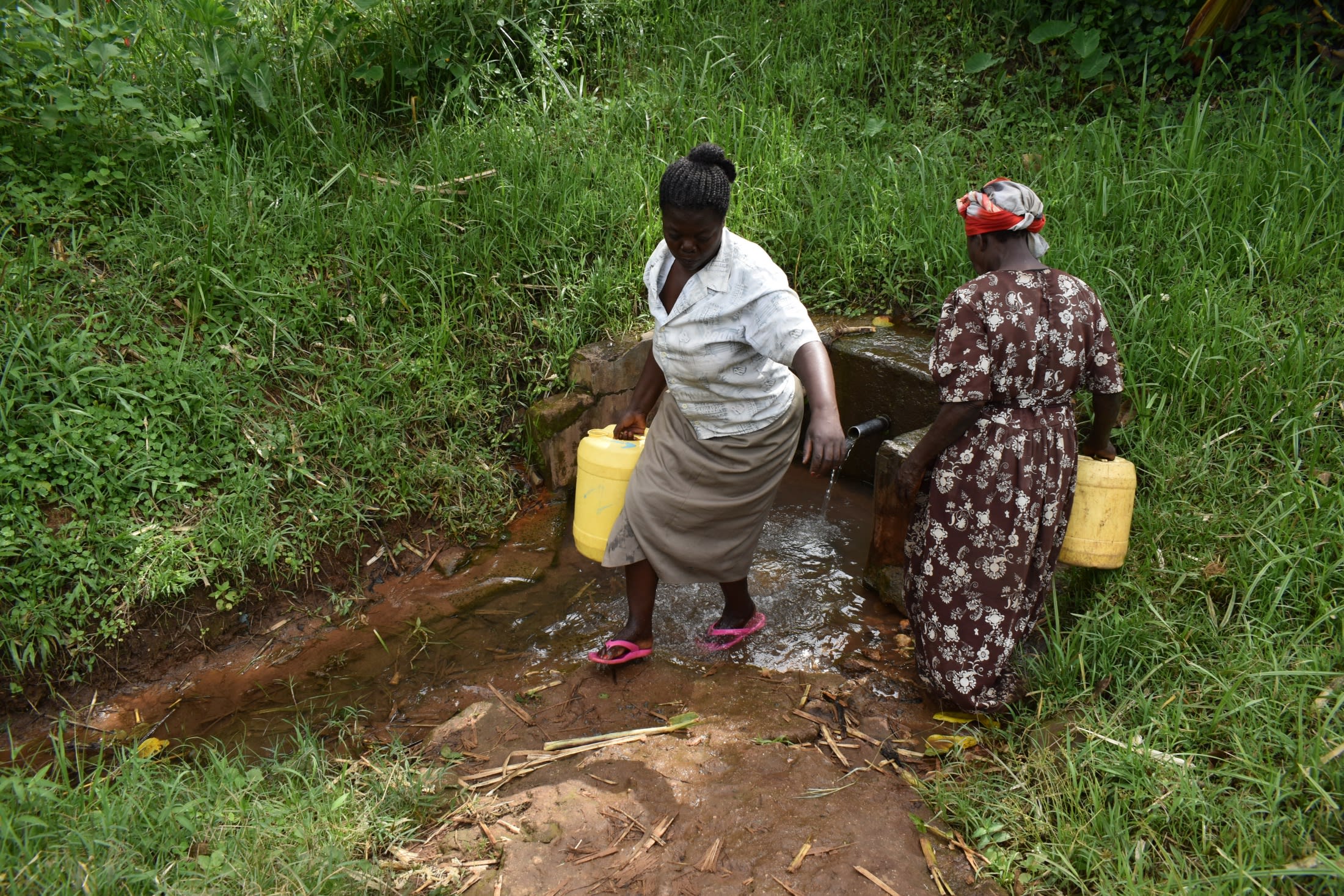
With the spring being the only water source, there is overcrowding and long queues to collect water, especially during the dry season when the water flow slows. Some community members wake up as early as 6 am to fetch water, hoping they will not have to wait as long and can focus on their other daily tasks.
"Tengeti A spring was constructed by the community members through the help of a well-wisher twenty years ago. As time went by, the community members realized that some spring eyes were not captured, and this has been a challenge to the water users. The water coming from all around the spring and under the spring wall has weakened the structure over the years. There are visible cracks that the community members have tried to repair but in vain," said our field officer Olivia Bomji.
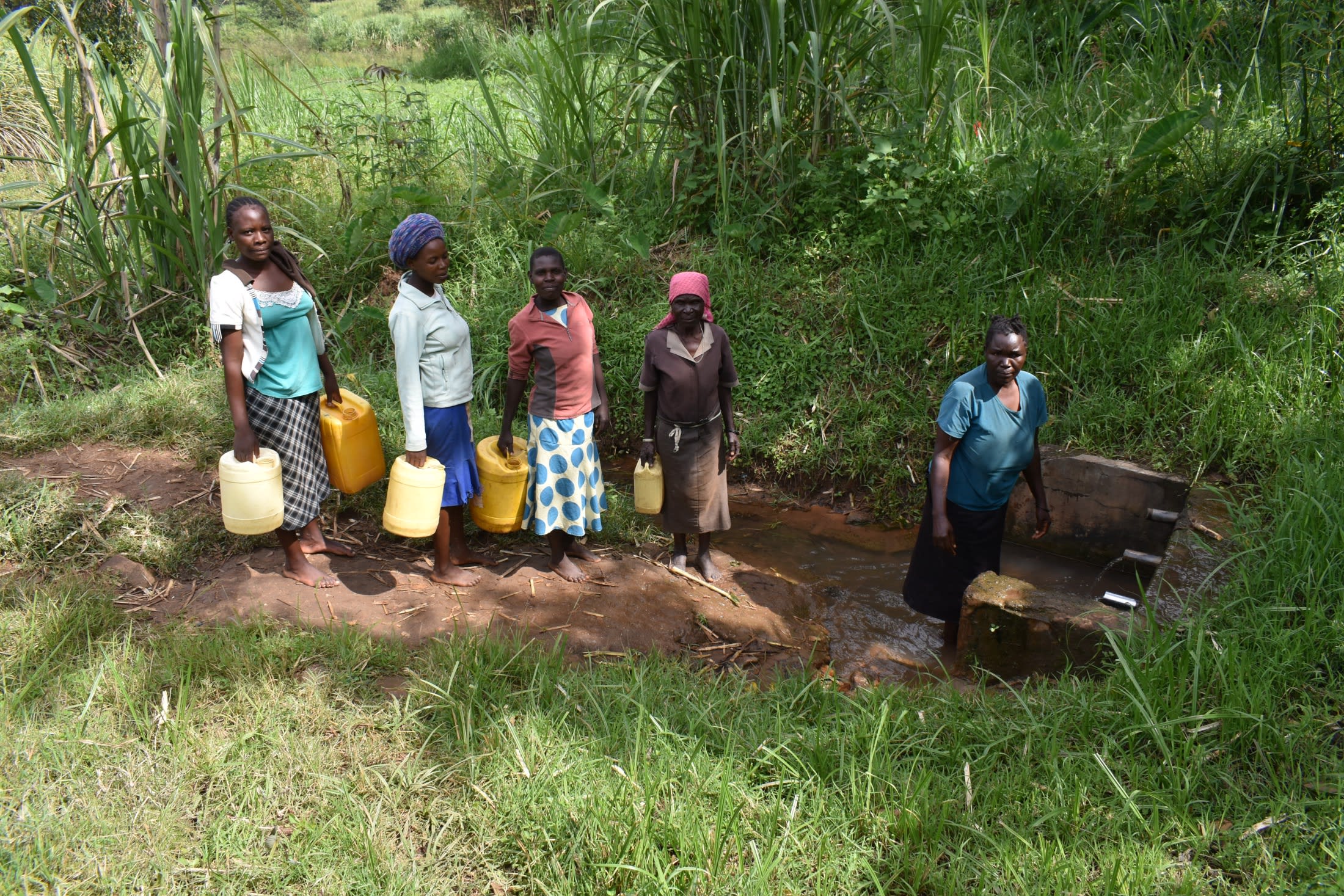
"The community members also tried to repair the stairs because it was very slippery, and people were falling while carrying water. Although they tried to repair [them], it won't last long because it is already chipping out," Olivia continued.
The spring eyes not captured during construction affect the quality of water community members can fetch because that water mixes with the water coming from the pipes. The dirty water causes itchiness, and community members have reported that drinking the water causes frequent stomach pain and coughs, especially during the rainy season.
"I have been so sick lately, and I feel weak. [I] am so sad that what brings life can take life so easily. I say this because we have water, but it is contaminated. I pray that one day our water will be protected well and typhoid will go away," said 10-year-old Flavian W., shown below collecting water.
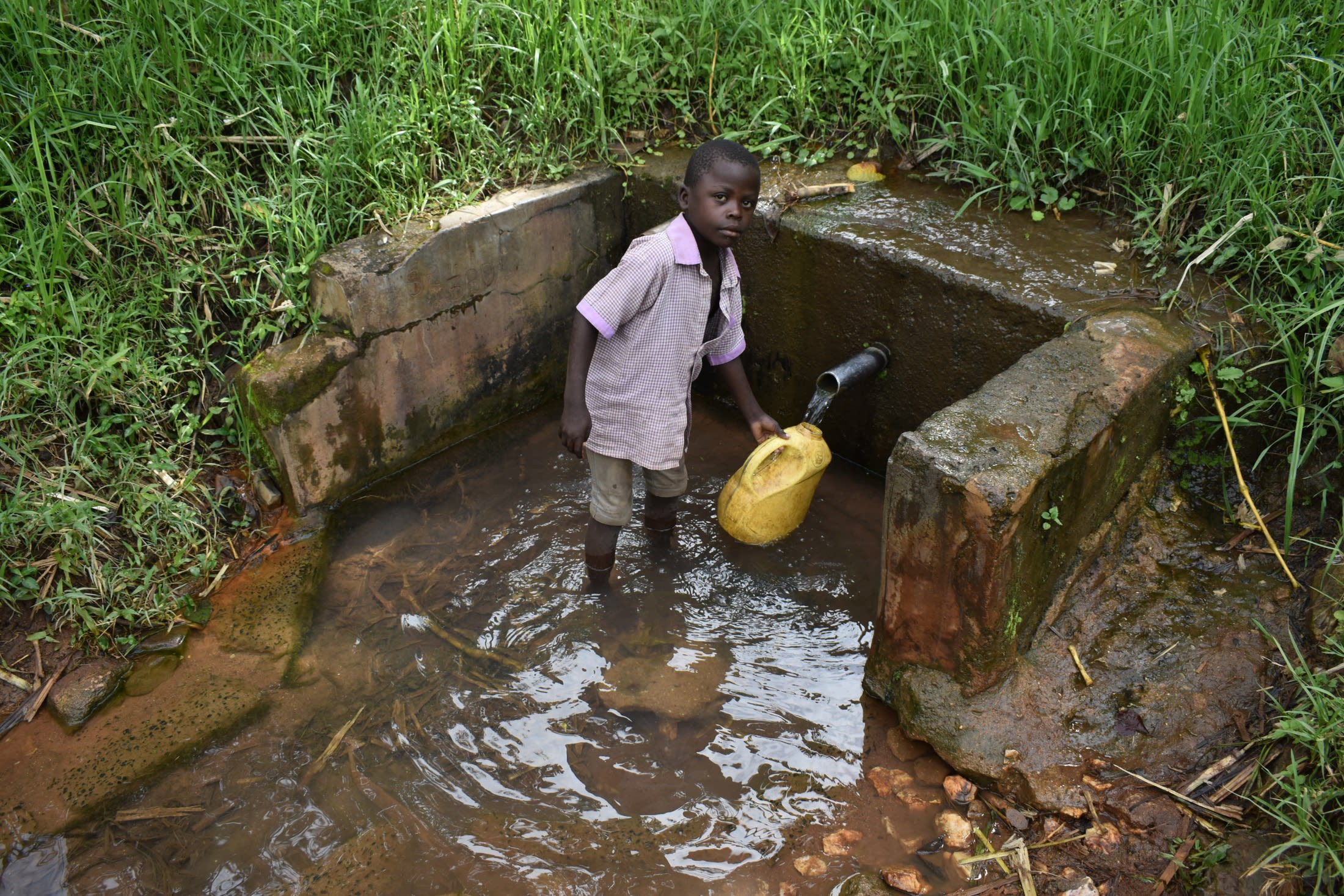
By protecting this spring, community members like Nancy and Flavian will be able to access clean and safe water without costly consequences.
"I hope protecting this spring afresh will bring joy to me as a mother," concluded Nancy.
What We Can Do:
Spring Protection
Protecting the spring will help provide access to cleaner and safer water and reduce the time people have to spend to fetch it. Construction will keep surface runoff and other contaminants out of the water. With the community’s high involvement in the process, there should be a good sense of responsibility and ownership for the new clean water source.
Fetching water is a task predominantly carried out by women and young girls. Protecting the spring and offering training and support will, therefore, help empower the female members of the community by freeing up more of their time and energy to engage and invest in income-generating activities and their education.
Training on Health, Hygiene and More
To hold training, we work closely with both community leaders and the local government to approve small groups to attend training. We ask community leaders to invite a select yet representative group of people to attend training who will then act as ambassadors to the rest of the community to share what they learn.
The training will focus on improved hygiene, health, and sanitation habits in this community. With the community’s input, we will identify key leverage points where they can alter their practices at the personal, household, and community levels to affect change. This training will help to ensure participants have the knowledge they need about healthy practices and their importance to make the most of their water point as soon as water is flowing.
Our team of facilitators will use a variety of methods to train community members. Some of these methods include participatory hygiene and sanitation transformation, asset-based community development, group discussions, handouts, and demonstrations at the spring.
One of the most important issues we plan to cover is the handling, storage, and treatment of water. Having a clean water source will be extremely helpful, but it is useless if water gets contaminated by the time it is consumed. We and the community strongly believe that all of these components will work together to improve living standards here, which will help to unlock the potential for these community members to live better, healthier lives.
We will then conduct a small series of follow-up trainings before transitioning to our regularly scheduled support visits throughout the year.
Training will result in the formation of a water user committee, elected by their peers, that will oversee the operations and maintenance of the spring. The committee will enforce proper behavior around the spring and delegate tasks that will help preserve the site, such as building a fence and digging proper drainage channels. The fence will keep out destructive animals and unwanted waste, and the drainage will keep the area’s mosquito population at a minimum.

 Protected Spring
Protected Spring
 Rehabilitation Project
Rehabilitation Project










